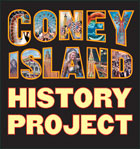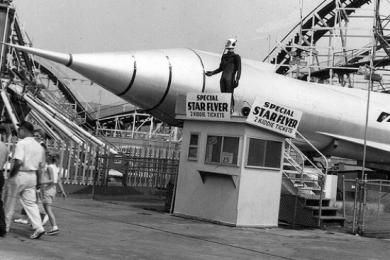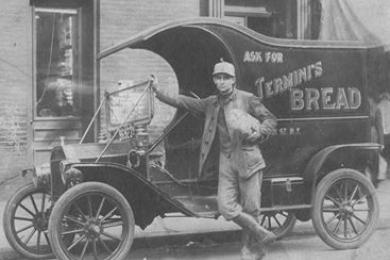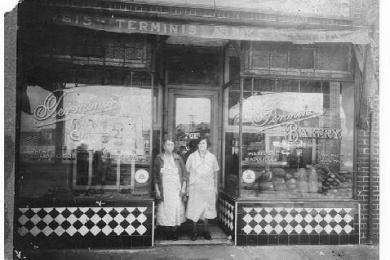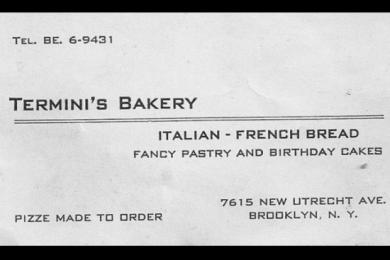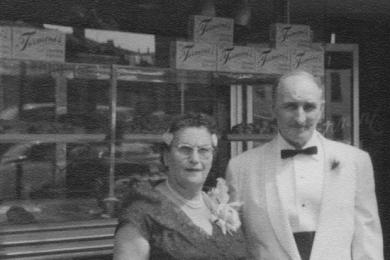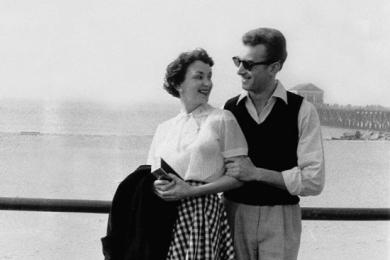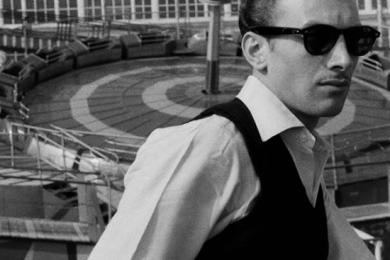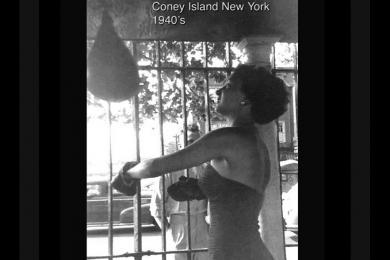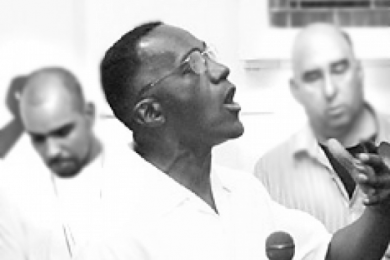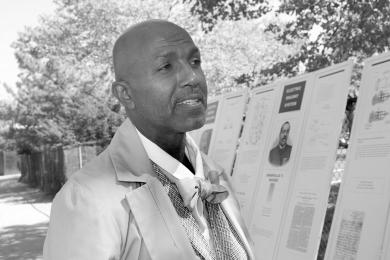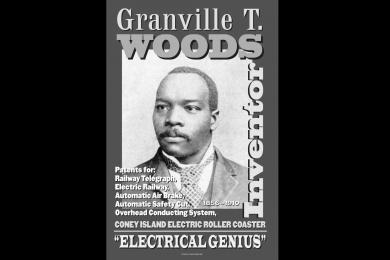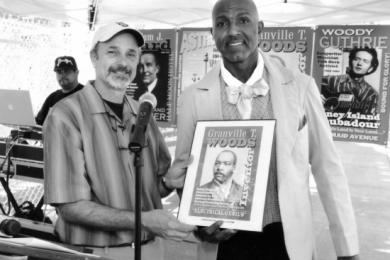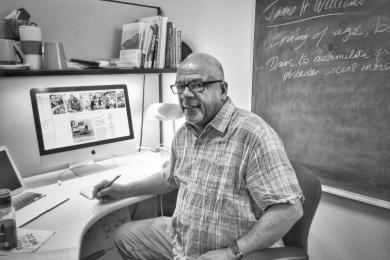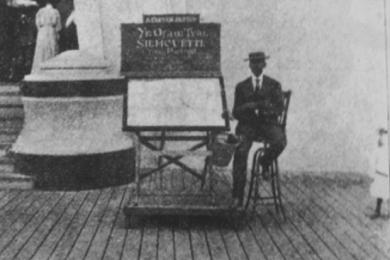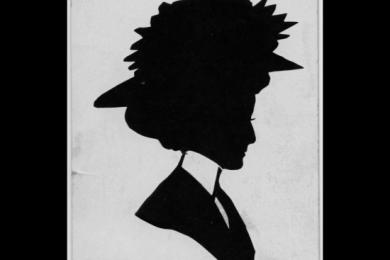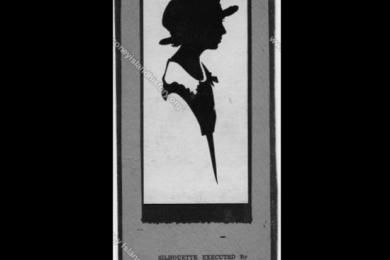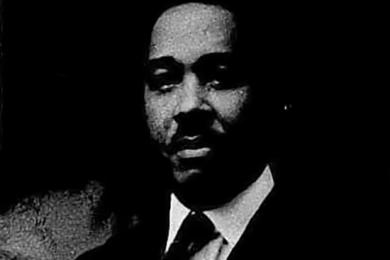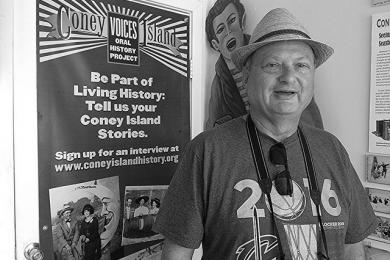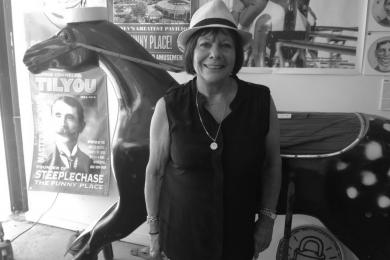Richard Termini's earliest memories are of playing under the El on New Utrecht Avenue in Bensonhurst, where his family operated Termini's Bakery. Founded by his grandfather Giuseppe 'Joe' Termini in Manhattan in the early years of the 20th century, the bakery soon moved to Brooklyn, where it prospered and fed the extended family until closing in 1985. Richard recounts memories of baking with his grandfather and of neighborhood residents lining up to cook their Thanksgiving turkeys in the store's brick oven. His parents Carmella Turturro and Richard Termini met in Coney Island in the 1940s at Ravenhall Baths, where he has fond memories of being taken as a child. As a six-year-old in 1962, he rode the Astroland Rocket, an experience that inspired a lifelong interest in designing and building high power rockets. Now living in Australia, Richard shares his impressions of the last time he visited Coney Island in August 2001.
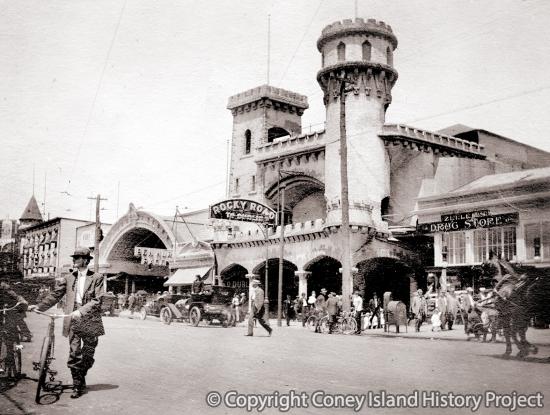
Throwback Thursday photo of the Rocky Road to Dublin, circa 1909, from the Coney Island History Project Collection. This scenic railway coaster ride, with its dramatic crenelated towers, was located on the current site of Brightwater Towers on Surf Avenue Between West 5th and West 8th Streets, across from the Aquarium. To the left is the arched entrance the Ben Hur Race double-track coaster. To the right is Zellers Drug Store, which competed with Chambers Drug Store across the street. Both were famous for their soda fountains. The street scene shows three forms of transportation: horses, bicycles, and the early automobile.
Three years ago today, our friend Cesar Rafael, a Coney Island amusement operator since 1979, passed away. This oral history was recorded by Charles Denson for the Coney Island History Project in 2005. "My heart will always be in Coney Island," says Cesar who got his start working with the late Jimmy Balloons and Ronnie Guerrero. He talks about running rides in the 1980's and '90s, dealing with gangs, the city's mishandling of crime, owning his own arcade, and being forced out by development.
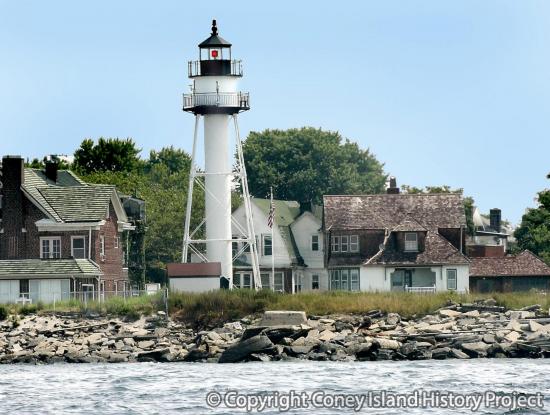
Today in Coney Island History: On March 2, 1889, Congressional statute established a lighthouse at Norton's Point on the western end of Coney Island. 2011 photo by Charles Denson from the Coney Island History Project Collection.
Charles Denson, director of the Coney Island History Project, has photographed the Coney Island Lighthouse and Sea Gate for over 45 years and this 2013 trailer for his film uses personal photographs, videos, and archival images from his archive.
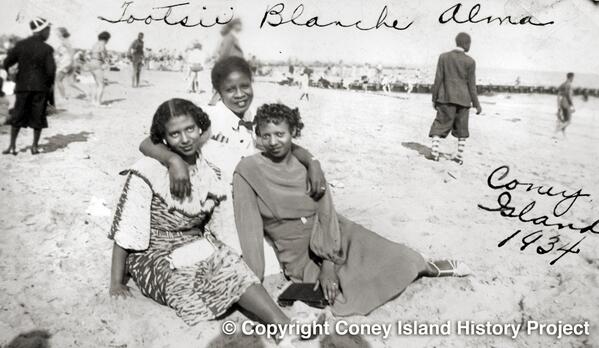
In honor of Black History Month, we're sharing interviews recorded for the Coney Island History Project Oral History Archive. Check out our online archive, which is catalogued by place, period, theme and language, to discover additional interviews.
Listen to historian Eric K. Washington talk about E.J. Perry, an African-American silhouette cutter who had concessions at Luna Park and Dreamland. Washington's research and writings brought the long forgotten Perry, once known as "America's most famous silhouette cutter," into the public eye once again. Recorded by Kaara Baptiste in 2016.
Longtime resident and community activist Ronald Stewart had lived in Coney Island more than 50 years at the time of this interview. He recounts being forced out by urban renewal aka "urban removal" and the various places he has lived in Coney Island including an Ocean Parkway rooming house, a bungalow on Neptune Terrace, a succession of apartments and eventually his own home. Recorded by Charles Denson in 2007.
David Head is a retired NYC Transit worker and former chairman of the Black History Committee for TWU Local 100. Head has championed the accomplishments of the inventor Granville T. Woods (1856-1910). Among Woods' many electrical patents was one for the world's first electric roller coaster, which was demonstrated in Coney Island a century ago. In 2008, the corner of Stillwell & Mermaid Avenues was named Granville T. Woods Way in his honor and he was inducted into the History Project's Coney Island Hall of Fame. Recorded by Charles Denson in 2016.
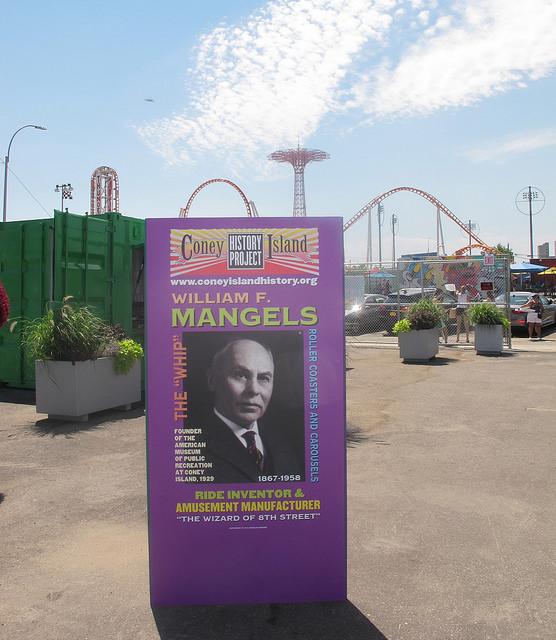
In February we honor Coney Island ride inventor and amusement manufacturer William F. Mangels (born February 1,1867- died February 11, 1958). His rides have given pleasure to many generations and continue to do so today.
Remember the Whip? This circa 1920 Mangels Fairy Whip Car in the Coney Island History Project collection is on display at our exhibition center and your kids can ride the circa 1950s Mangels Fire Engines and Pony Carts at Deno's Wonder Wheel Amusement Park. "The Wizard of 8th Street" is among the pioneers and visionaries in our Coney Island Hall of Fame.
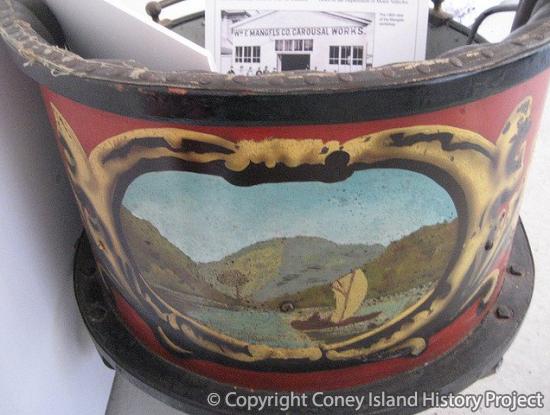

Art by August Wolfinger on the rounding boards of Coney Island's B&B Carousell. Photo © Coney Island History Project.
Today in history: Artist August Wolfinger, 'The Michelangelo of the Midway,' died on December 1,1950. His pastoral and patriotic scenes grace the rounding boards of Coney Island's historic B&B Carousell. From April through October, when the B&B is open, it's one of the stops on the Coney Island History Project Walking Tour. Although the amusement rides are now closed for the season, you can join our weekend tours year round. After Labor Day through the fall and winter, tours start at 12:30 pm. A tour is confirmed when we have a minimum of 3 reservations. Advance purchase of tickets through our eventbrite page is required since tours are limited to 20 people.
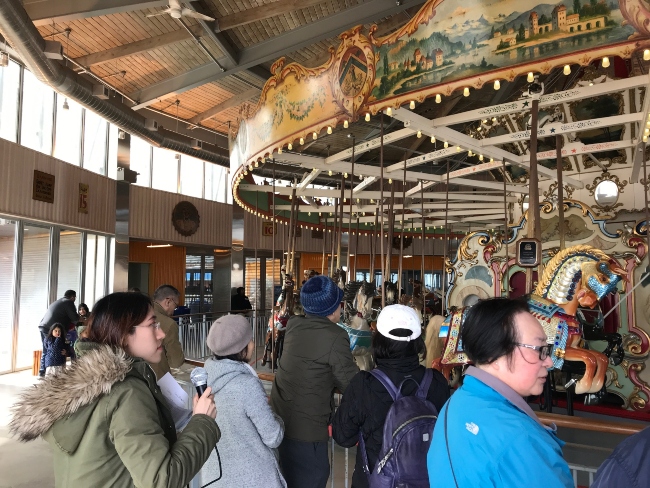
Coney Island History Project Walking Tour at B&B Carousell. Photo © Coney Island History Project.
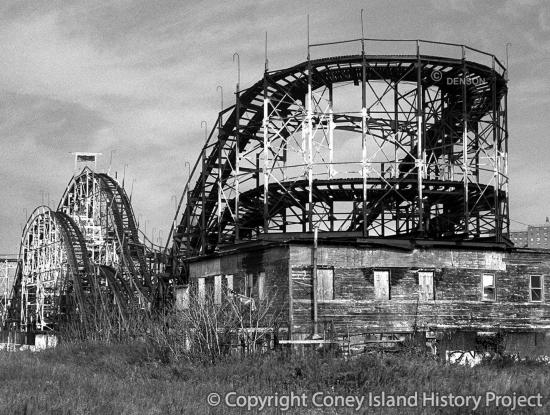
Today in Coney Island history, on November 17, 2000, the original Thunderbolt roller coaster, built in 1925 and in operation until 1982, was demolished by the City. Listen to the Coney Island History Project's oral history with Meg Feeley about a renegade ride on the Thunderbolt on a February night in the 1980s, a few years after the roller coaster had closed down.
In a pair of interviews recorded in 2016, cousins Linda Kramer Evans and Harold J. Kramer share childhood memories of visiting their great-aunt and great-uncle in Coney Island in the 1950's. Molly and George Moran owned and operated the Thunderbolt and lived in the house under the roller coaster, which was later immortalized in Woody Allen's 1977 film Annie Hall. The kids loved it when the house shook as the coaster coursed overhead, recalls Evans.
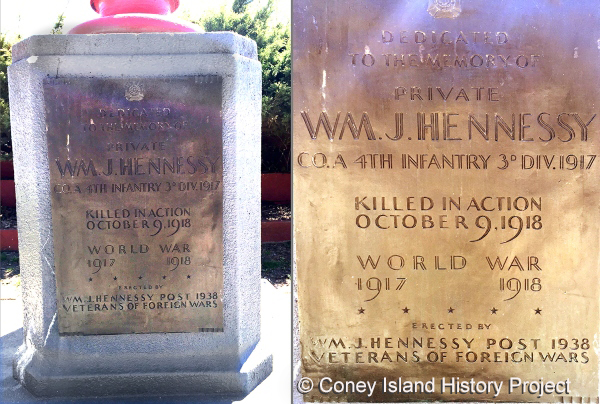
Today, on Veterans Day, we honor and remember those who served. There are two important veterans monuments in Coney Island that few people know about. In Asser Levy Park (Seaside Park) at Surf Avenue and Ocean Parkway sits a stone monument with brass plaques made from the the USS Maine, the battleship that sank in Havana Harbor in 1898, contributing to the outbreak of the Spanish–American War. The plaque, with President Theodore Roosevelt’s image, commemorates an encampment of Spanish-American War veterans that took place at that site in Coney Island from July 6th to 9th, 1924. The plaque was erected that year by Edward Tilyou and the Coney Island Chamber of Commerce. Across the street from the monument, at the base of a flagpole next to the Boardwalk, is a plaque honoring William J. Hennessy of 3010 West 1st Street in Coney Island, who was killed in action on October 9th, 1918 during World War I. Hennessy Triangle is at Surf Avenue and Sea Breeze Avenue. These monuments are easily overlooked, but those who served and gave their lives a century ago should be honored on this day of remembrance.
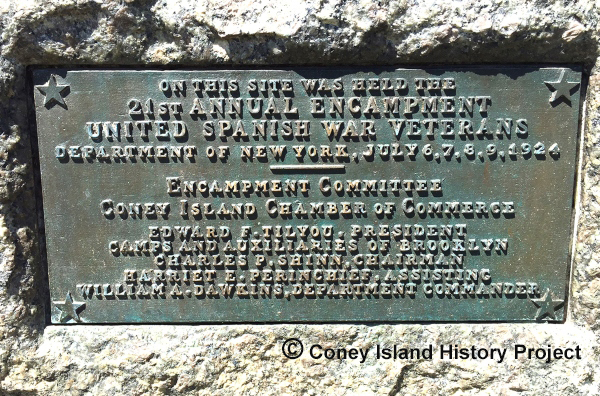
Veterans Monument Coney Island History Project
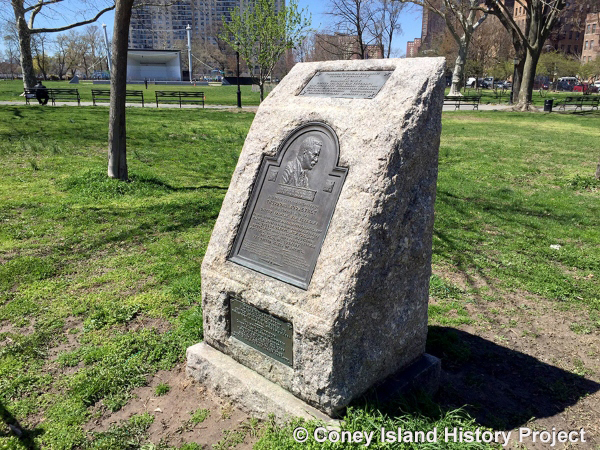
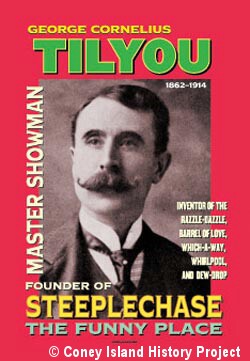
"If Paris is France, then Coney Island, between June and September, is the world." --George C Tilyou.
George C. Tilyou, founder of Steeplechase Park and creator of Coney Island's Funny Face logo was born on this day, February 3rd, in 1862.
Tilyou was a master showman and amateur psychologist who understood how people wanted to be entertained. He realized that his customers were happy to play the fool to entertain others.
He came with his parents to Coney Island in 1865 at the tender age of three. His father, Peter, opened a small wooden bathhouse and restaurant on the beach, and young George was soon selling bottles of souvenir sand to visitors. The family nearly lost everything when they challenged Coney's political boss, John McKane, in the 1880s. After McKane went to prison, the Tilyous' fortunes improved, and soon George owned a theater, a Ferris wheel, and other rides scattered along the beach.
Tilyou became Coney's biggest booster and a philanthropist who supported local orphanages, the Catholic church, children's hospitals, and other charities.
In 1897 Tilyou moved his rides into an enclosed park at West Sixteenth Street and Surf Avenue. Horse racing was the park's theme. The Steeplechase ride enabled ordinary people to experience the thrill of racing by riding mechanical horses along a steel track.
Read more about Tilyou on his page in the Coney Island History Project's Coney Island Hall of Fame.
